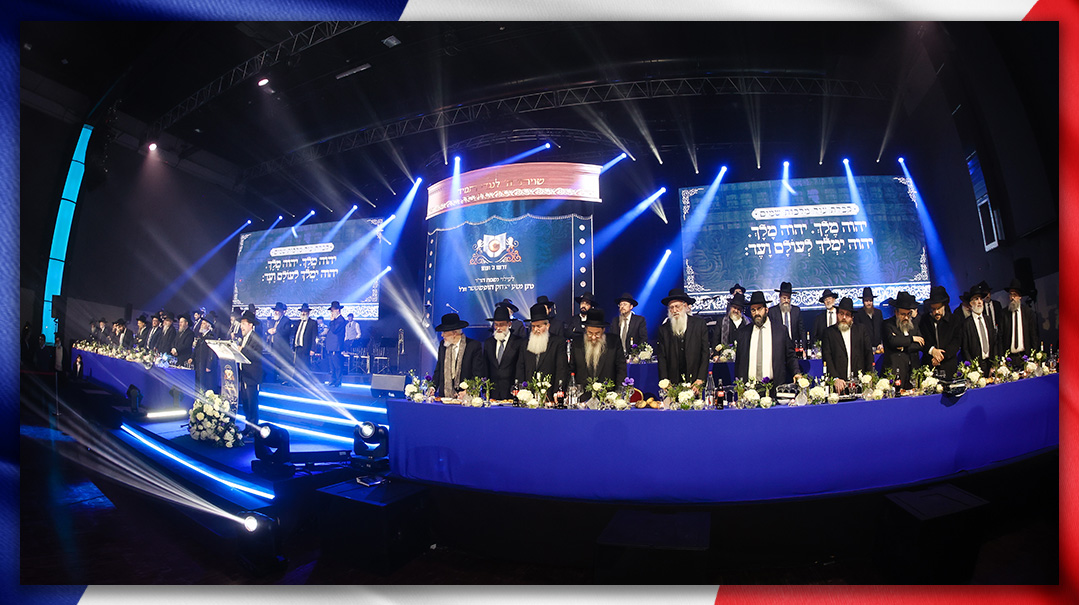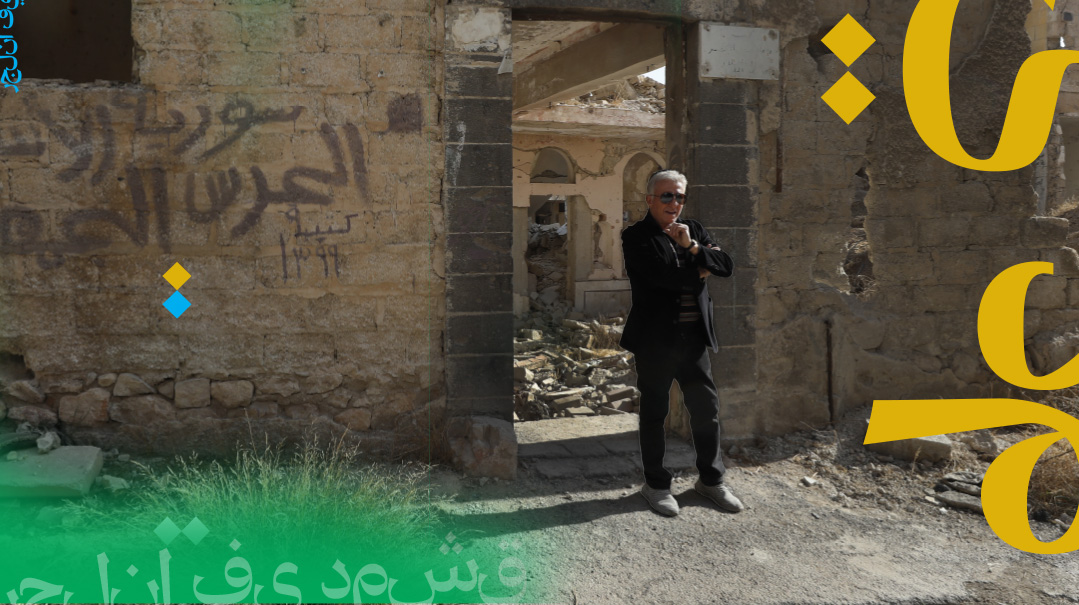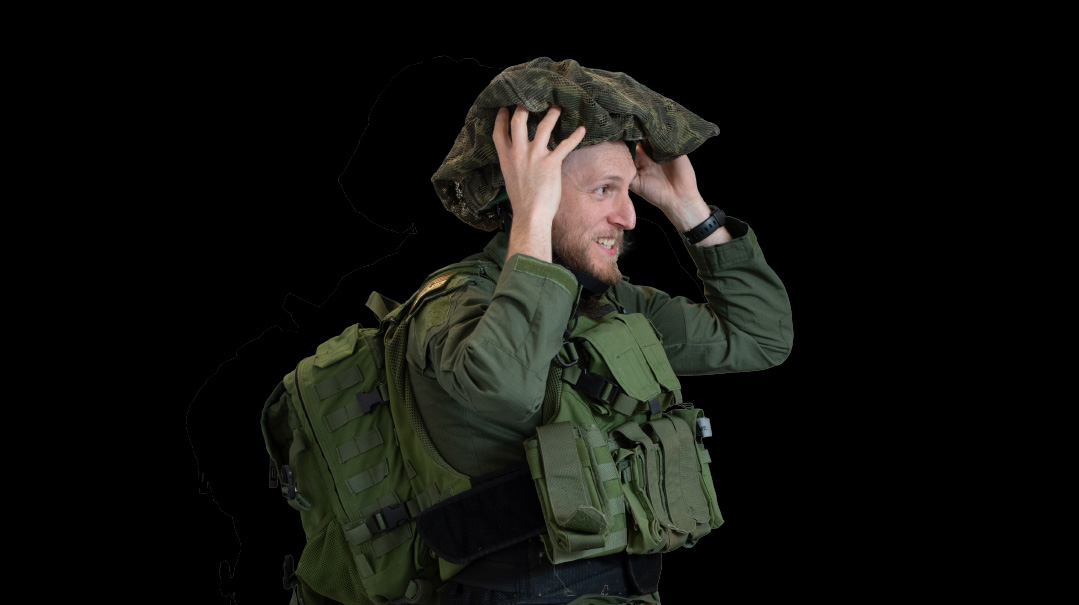French Revolution

A city whose Torah glory was long in the past and had become a mussar byword for decadence, finds itself once again on the Torah map

The scene in the Paris docklands last month could have been anywhere across the Torah world. In the massive former industrial space regenerated to serve the entertainment industry, singers rehearsed and microphones were adjusted for roshei yeshivah.
Underway were the last preparations for the signature blend of Torah inspiration and musical extravaganza with which Dirshu marks events like the global siyum of the three-year Mishnah Berurah cycle.
Accents apart — and a certain resonance that comes from being only miles from where Baalei HaTosafos such as Rabbeinu Yechiel of Paris lived — the identikit venue could have been anywhere from South Africa to New Jersey.
And yet, as Mir Rosh Yeshivah Rav Yitzchak Ezrachi finished his keynote address with a signature roar of “Only Torah!” and a cross section of Paris Jews erupted in singing, the event had a unique subtext.
That’s because a French revolution is underway. A city whose Torah glory was long in the past and had become a mussar byword for decadence, finds itself once again on the Torah map.
Exhibit A in that metamorphosis is Dirshu itself. Like ubiquitous consumer brands that signal a country’s socio-economic status, the presence of hundreds of shiurim from the ground-breaking Torah organization is a sure sign that today’s French Jewish community is changing rapidly.
The traditional Jews and fine Parisian living of yesteryear are still there, but these have been joined by multiple yeshivos and kollelim. As the community moves east and west from the inner-city neighborhoods to the suburbs, a parallel process of spiritual upgrade is taking place as well.
Viewed from America or Israel, the almost half-million-strong community lives in fear, as the specter of terror attacks sends masses stampeding for the exit.
That perception is mostly caricature. In reality, the country’s Jewish community is evolving to cope with the security realities, and a quiet Torah revolution is well underway.
No Ghetto
Walking along Rue Jean Jaurés, a main avenue in Paris’s heavily Jewish 19th arrondissement, the first thing that strikes you is a question. “Where are all the Jews?”
Unlike Boro Park or Golders Green, the 300,000 Jews in this city don’t live in a ghetto. Instead, they’re spread out thinly across large areas with other populations, both ethnic and native French.
That means that as late afternoon gives way to dusk, a visitor starts to look nervously over his shoulder.
The idea that you can’t walk around the streets of Paris without a baseball cap is also wrong. While many local Jews do so, yarmulkes are readily visible in this part of the city.
In search of a Minchah, I find an older-looking man with a kippah obviously bent on the same mission.
“Are you not worried to walk around without a cap?” I ask as we walk.
“I am a bit nervous,” he admits in a mixture of French and Ivrit, “but Hashem is in charge.”
His destination — a large Moroccan shul — is typical of the French Jewish experience.
The perimeter wall, heavy locks, and guard booth speak of the security that is normal in a community that has suffered recent terror attacks. But inside there are other telling signs of the specific circumstances that had molded today’s French Jewry.
The mix of younger and older men, plus Moroccan tunes, could be anywhere in the Sephardic world. Ditto for the collection of Yalkut Yosef from Rav Ovadiah. But uniquely, there’s a large, reverential plaque for Rav Gershon Liebman, a leading disciple of Novardok mussar.
A close friend of the Steipler, “Reb Gershon” survived both Soviet and Nazi forced labor, and after liberation, went on to found yeshivos in Germany and eventually France, where he set up a vast network of Torah institutions.
Rav Liebman died in 1997 without children, but in a very real way, the current French Torah boom is a child of the fearless Novardoker pioneer and others like him.
Ecosystem
About 15 kilometers east of the 19th — or half an hour in Paris traffic terms — is a window into the ground zero of the latest stage in the country’s Jewish growth.
With its villas and gardens, the suburb of Le Raincy is an island of upmarket suburbia in a wider sea of socioeconomic deprivation.
It’s also the home to a unique set of Torah institutions, led by Rav Yehudah Toledano.
His Merkaz HaTorah campus is an entire ecosystem, catering from nursery age to high school and yeshivah.
What stands out is the parallel existence of two different educational approaches: In one building is a yeshivah high school of a type familiar from London or New York. Inside a building that flies the French and European Union flags, as required by law, are 200 students whose day is divided between Gemara and secular studies.
Next door, but on a separate campus, is an institution more familiar from Bnei Brak. Chazon Nachum is a high-level Torah-only yeshivah ketanah.
As head of both institutions, Rav Toledano explains the origins of the twin approach.
“My father, Rav Yaakov Toledano, was born in Meknes, Morocco, and was sent by his father to learn first in Schneider’s Yeshiva in London, then Ponevezh, and then Gateshead Kollel.
“In the ’70s and ’80s,” says Rav Yehudah Toledano, “French Jewish life was what was called ‘Consistoire Judaism,’ after the establishment Jewish organization dating from Napoleon’s time. It was a Judaism of synagogues — mostly Ashkenazic — with some shiurim added.”
The waves of North African Jews from traditional backgrounds who arrived from the 1960s onward didn’t feel at home in these shuls and were anyway preoccupied with establishing themselves in the new land of economic promise.
It was in that unpromising soil that a handful of pioneers such as Rav Yitzchak Chaikin of Aix-les-Bains (a talmid of the Chofetz Chaim), Rav Mordechai Rottenberg (known as the “Rouv”) of Paris, and Rav Yaakov Toledano operated.
“When my father arrived in France in 1967,” explains Rav Yehudah Toledano “he saw that there was no chance of getting local Jews to send their children to a yeshivah, but if there were high-level secular studies, these traditional Jews would send their children.”
Thus was born the high school. Later, as the community matured, Rav Yaakov was able to found a classic yeshivah, and to this day they are complimentary.
“Like a restaurant, we are able to offer different options,” says his son Rav Yehudah Toledano, who took over the institutions when his father passed away in 1996.
Second Generation
Today’s French Torah world is built on the first fruits of that struggle decades ago.
“In the ’80s, a great kiruv boom took place under leaders such as former chief rabbi Yosef Sitruk, whose Monday evening lectures could draw 1,000 people,” says Rav Toledano.
“Movements like Arachim were successful and introduced Jews to real Gemara learning. Standards of kashrus rose, and there was an explosion of kosher stores as well as the number of mikvaos.”
As is evident from the gigantic campus of the Chabad elementary school in the 19th district — which educates close to 2,000 children — Lubavitch played a key part in the country’s spiritual progress.
Thirty years after that kiruv revolution, the French Torah world is a fact. There are multiple yeshivos and kollelim in Paris, Marseille, Lyons, and Strasbourg.
As a leading figure in France’s Dirshu movement, Rav Toledano points to what the organization’s success means in the context of the community’s evolution.
“Dirshu founder Rav Dovid Hofstedter sees France as unique, in that Dirshu has facilitated a sense of community, to allow the different Orthodox communities to feel a sense of belonging to the wider Torah world.”
Anti-Semitism
Somewhere around the 19th’s main thoroughfare, I glimpse a kosher supermarket. “Hypercacher” reads the sign, one that sends a chill through the bones because of the association with the deadly attack in 2015 — although it’s only a branch of a Paris-wide chain.
When all is said and done, terror is a reality, and Jews are less safe than across the channel in London, where a large French expat population lives.
The slightly threatening feeling of districts like the 19th have persuaded many Jews to up sticks and head to suburbs like Le Raincy.
But Rav Toledano explains that educational opportunities are as much a factor as hatred.
“The movements to the west of Paris and the Île-de-France in the city’s east are a reaction to anti-Semitism, of course, but also in good part because the baalei teshuvah mentioned above are financially well-off and have gone to live in the more affluent districts of western Paris.
“They also want to get closer to Orthodox Jewish schools. That’s why the community around Merkaz HaTorah with nearly 1,000 students has grown in 30 years from about 20 families to nearly 500 families.”
In the context of Jew-hatred, Israel is often touted as a panacea. The trend of couples going to learn in Israel and then remaining there acts as a brain drain, which worries local rabbanim.
But it’s specifically those who move to Israel to flee bigotry in their native country that concern Rav Toledano.
“The panic to leave after the terror attacks has finished,” he says, “especially as it’s now clear that moving to Israel can often be disastrous for children. Here in France, they’re not forced to choose between secular and yeshivah education, for example. In the polarization of Israel, that choice is often destructive.”
Twenty years ago, says Rav Yehudah Toledano, he was pessimistic about the future of French Jewry. “I thought that growth had plateaued. But now it’s clear that the Orthodox Jewish community is on a growth trajectory.
“We’re going to see a growth of Torah learning in Jewish schools, yeshivos, and kollelim with the tradition and warmth that is uniquely French.”
(Originally featured in Mishpacha, Issue 902)
Oops! We could not locate your form.







